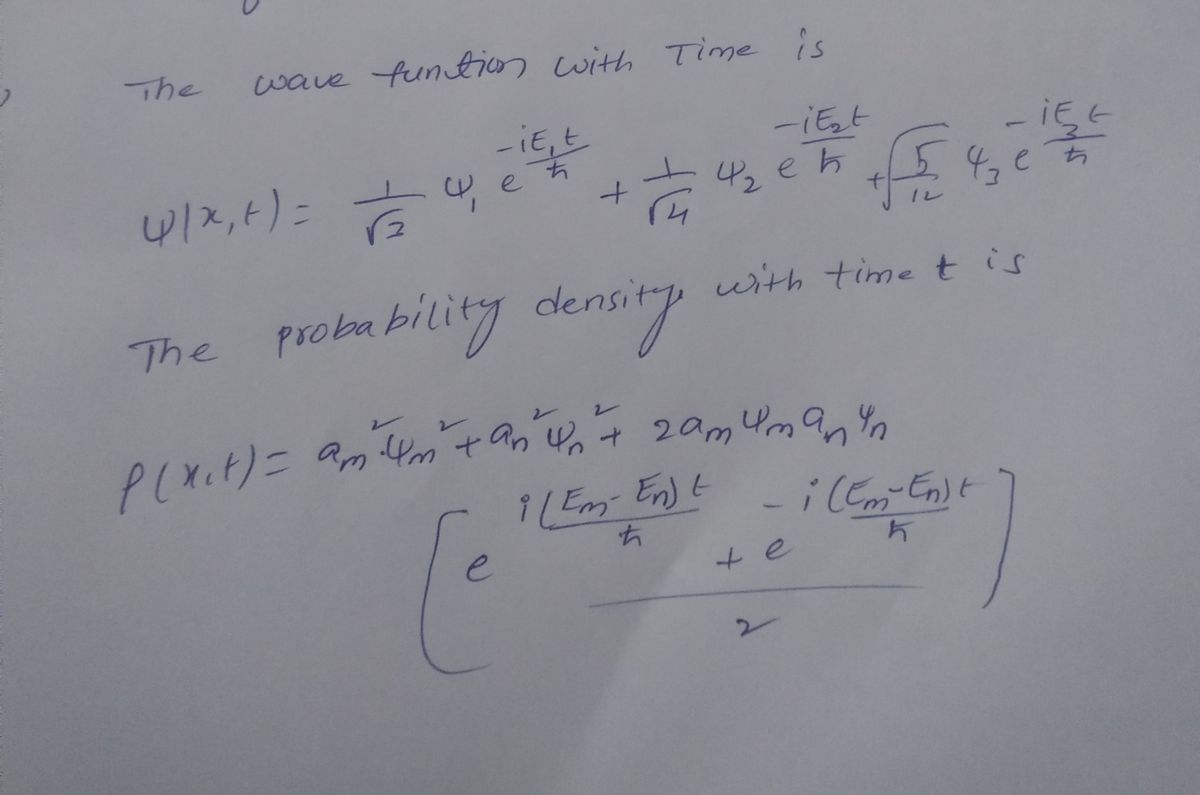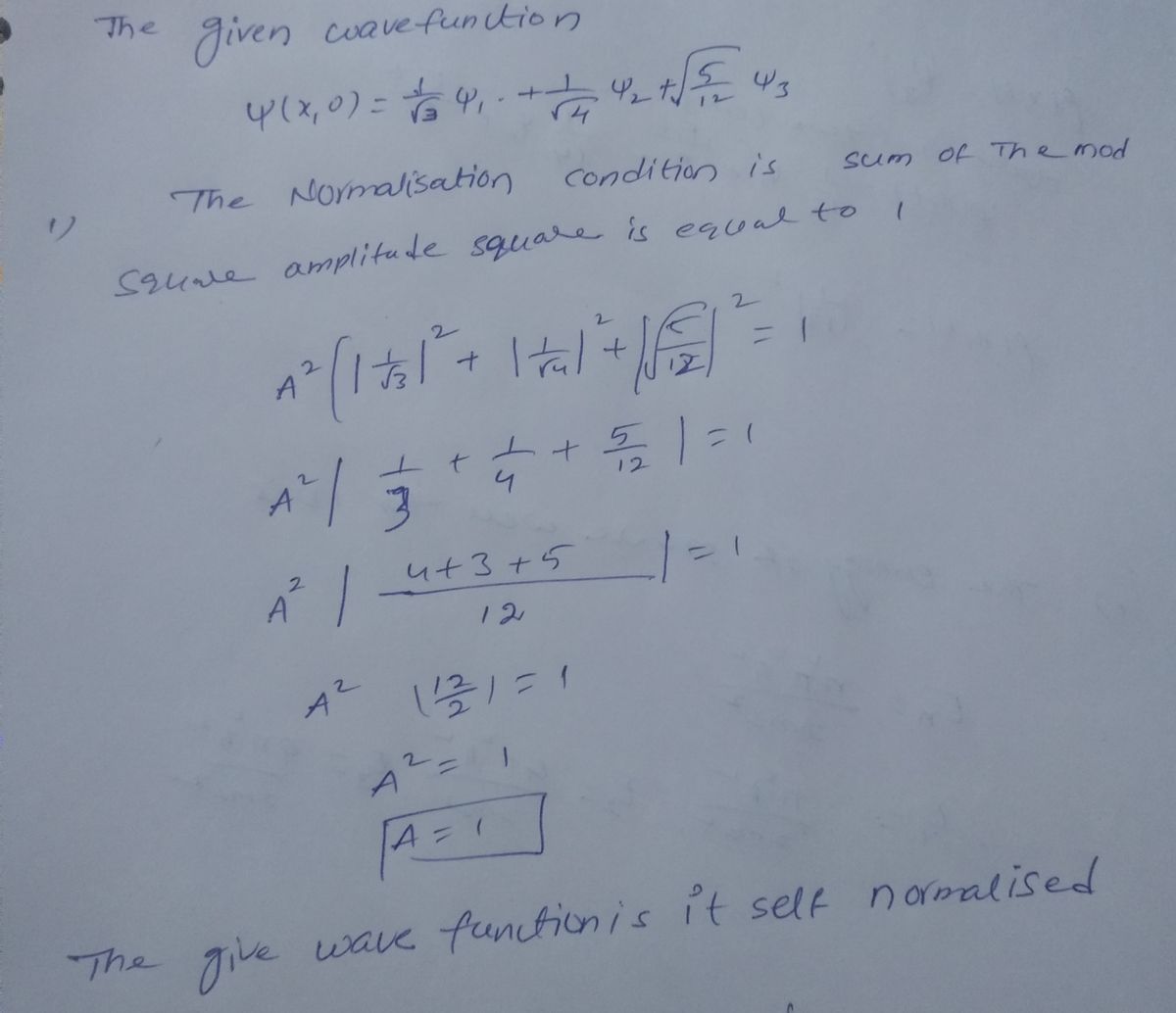) = µ₁/√3 + ¥₂/√4 + 3√(5/12), where ₁ is the ith normalized stationary state infinite square well. Y itself is normalized t) and, using the explicit stationary state wavefunctions of the infinite square well, obability density at time t as a real function. energy of the nth normalized stationary state, what are the probabilities of measuring ting the result E₁, or E2, or E3? H> when written in terms of E₁ ? = x > and
) = µ₁/√3 + ¥₂/√4 + 3√(5/12), where ₁ is the ith normalized stationary state infinite square well. Y itself is normalized t) and, using the explicit stationary state wavefunctions of the infinite square well, obability density at time t as a real function. energy of the nth normalized stationary state, what are the probabilities of measuring ting the result E₁, or E2, or E3? H> when written in terms of E₁ ? = x > and
Related questions
Question
compute d and e please!

Transcribed Image Text:Let y (x, t = 0) = µ₁/√3 + ₂/√4 + 3√(5/12), where ¡ is the ith normalized stationary state
solution of the infinite square well.
(a) Verify that Y itself is normalized
(b) Find Y (x, t) and, using the explicit stationary state wavefunctions of the infinite square well,
express the probability density at time t as a real function.
th
(c) If En is the energy of the n™ normalized stationary state, what are the probabilities of measuring
energy and getting the result E₁, or E2, or E3?
(d) What is <H> when written in terms of E₁ ?
(e) Compute <x> and <p>
Expert Solution
Step 1: Checking the given function is normalised or not
The condition of normalisation is sum of mod squares of the coefficients is equal to 1ththet

Step by step
Solved in 6 steps with 6 images
